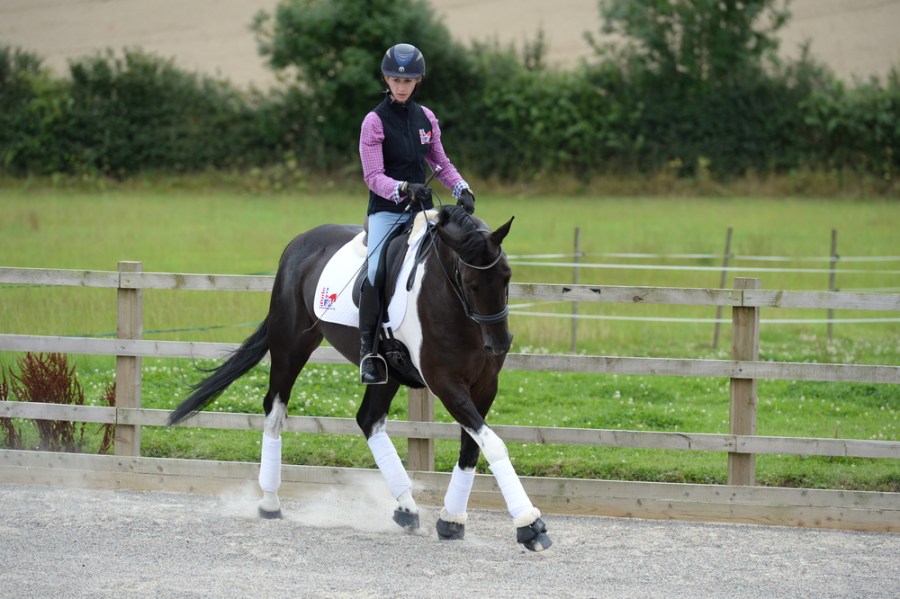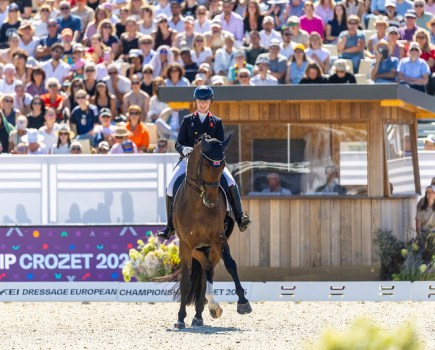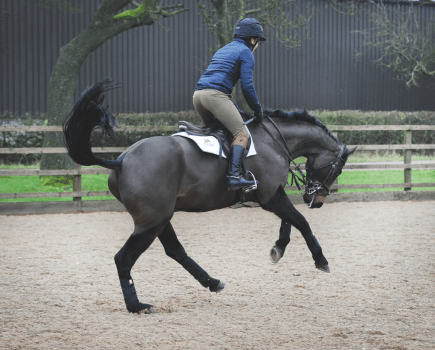Knowing your bend from your flexion will help you school your horse more effectively. Dressage trainer and judge Alison Short clears up any confusion
What is flexion?
Flexion produces a small angle of flexion from the poll to the wither, to either the left or right. The flexing rein requests the flexion and the non-flexing rein contains the amount of flexion allowed. Flexion is a preparing aid before you ride a circle or corner, and is used to supple your horse before asking for bend.
Once you’ve master the art of flexion your horse will no longer take your inside rein as a steering aid, but to do this correctly you need to develop an awareness of your rein aids and ability to use them in a refined way. When you ride your horse, do you keep him on the track with your inside leg or your outside rein?
If you have to use your outside rein to keep your horse on the track your outside rein is doing your inside legs job, and that means you’re requesting your horse to bend to the outside rather than flexing correctly.
What is bend?
Bend is where the whole of your horse’s body is uniformly bent, to follow the line of a circle or turn. Imagine you’re looking from above at you and your horse on a circle, the bend from his nose to tail should be an equal curve, like sitting in the middle of a half moon.
Imagine your horse is a millipede his whole body tracks section by section along the same line, methodically. As apposed to a large truck which has limited flexibility which when it’s turning the tail end swings out.
From riding the flexion exercise I described earlier, you’ll already be aware that to prevent your horse from falling in off the track when flexing to the inside, you have to apply your inside leg. How your inside leg is used and where is vital to the next exercise of bending.
Now Try These Simple Exercises
EXERCISE 1: Get a feel for flexion
To help you get a feeling for what flexion is, try the following exercise. You can do it in halt or if your horse is better on the move then quietly walk around the arena on a light but equal contact. This exercise isn’t about getting your horse ‘on the bit’, but it will give you greater submission and aid self-carriage, so your horse works in a rounder frame and through his back:
Step 1
There should be a straight line from your horse’s mouth, along the rein through your hands to your elbows. Maintain a contact with your thumbs pointing towards his bit, and your hands should be a fist height off of your horse’s neck. You also need to be aware of your own body position left to right and front to back, think of yourself as a Lego man with a stalk on your bottom that plugs into a hole in your saddle, you need to keep this as the basis of your position.
Step 2
In halt with your horse’s head and neck straight in front of you. Imagine a line drawn from each side of your horse’s shoulder forward to either side of his head, like a corridor. Ask your horse to gently turn his head to the left until his nose touches your imaginary corridor line to the left. A good gauge of how far to go is to see the left rein when flexing produces a small gap between the left rein and your horse’s neck, and the right rein should touch the neck. Now straighten his head and neck and repeat this to the right.
Step 3
Don’t forget to regularly check your position in the saddle hasn’t altered. You should still be sitting in a central position, if your shoulder twists back to the left you’ll pull too hard on your left rein, allowing your right shoulder to travel forward giving away your right non-flexing rein. Your reins should stay in close proximity to one another, imagine you have a large car sponge between your wrists and it needs to stay there!
EXERCISE 2: Practising your bend
The aim of this exercise is to get into the habit of coordinating both your bending leg aids and flexing rein aids. On the right rein in walk as you ride out of the corner both your legs should be parallel and close to the girth. Now you’re going to adjust your legs to the opposite bend position. Your left (outside) bending leg trigger left bend (counter flexion), and right (inside) holding leg controls the quarters, creating a very small amount of bend to the left (outside). Check your left (outside) rein isn’t touching your horse’s neck, and your right (inside) rein is touching his neck.
Once you’re near the end of the long side bring both legs back to a parallel position near the girth, straightening his head and neck too. Then adjust your legs back to the right bend position to repeat the exercise.
As with any exercise, it’s important for ride equally on both reins, and note if your horse feels different as you ride the exercise on the left and right. If your horse is stiffer on the left rein you may find he leaves the track when you ask for left bend.
If you’re leaving the track when using (left) outside bend you’re either releasing your (right) non bending rein from your right shoulder or not placing your right non-bending leg far enough behind the girth to control the outside of your horse’s body.
More about our expert
Alison Short has trained to Advanced level dressage and competed at regional level. She trains riders of all levels and is also a British Dressage listed judge
For more information visit her website www.alisonshort.co.uk








